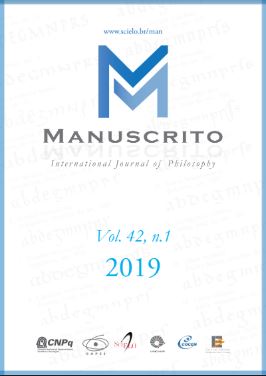Resumen
Causal approaches to explanation often assume that a model explains by describing features that make a difference regarding the phenomenon. Chirimuuta claims that this idea can be also used to understand non-causal explanation in computational neuroscience. She argues that mathematical principles that figure in efficient coding explanations are non-causal difference-makers. Although these principles cannot be causally altered, efficient coding models can be used to show how would the phenomenon change if the principles were modified in counterpossible situations. The problem is that efficient coding models also involve difference-makers that, prima facie, cannot be characterized as non-causal in this sense. Mathematical principles always involve variables which have counterfactual (instead of counterpossible) relations between them. However, we cannot simply assume that these difference-makers are causal. They can also be found in paradigmatic non-causal explanations and therefore they must be characterized as non-causal in some sense. I argue that, despite appearances, Chirimuuta's view can be applied to these cases. The mentioned counterfactual relations presuppose the counterpossible conditionals that describe the modification of a relevant mathematical principle. If these conditionals are the hallmark of non-causal relations, then Chirimuuta’s criterion has the desired implication that variables in mathematical principles are non-causal difference-makers.
Citas
BATTERMAN, R. On the explanatory role of mathematics in empirical science. British Journal for the Philosophy of Science 61, 1–25, 2010.
BATTERMAN, R and C. Rice Minimal model explanations. Philosophy of Science 81(3), 349–376, 2014.
BECHTEL, W. Mental mechanisms: philosophical perspectives on cognitive neuroscience. London: Routledge, 2008.
BECHTEL, W. Mechanism and biological explanation. Philosophy of Science 78(4), 533–557, 2011.
BECHTEL, W y Abrahamsen, A. “Mechanistic Explanation and the Nature-Nurture Controversy,” Bulletin d'Histoire Et d'pistmologie Des Sciences de La Vie 12: 75-100, 2005.
BOONE, W. y PICCININI, G. The cognitive Neuroscience Revolution, Synthese: 1-26. Published online, DOI: 10.1007/s11229-015-0783-4, 2015.
BOONE, W. y PICCININI, G. “Mechanistic Abstraction,” Philosophy of Science, DOI: 10.1086/687855, 2016.
CHIRIMUUTA, M. “Minimal models and canonical neural computations: The distinctness of computational explanation in neuroscience,” Synthese, 191(2), 127–154, 2014.
CHIRIMUUTA, M. Explanation in computational neuroscience: causal and non-causal. British Journal for the Philosophy of Science. doi: 10.1093/bjps/axw034, 2017.
CRAVER, C. F. Explaining the brain: Mechanisms and the mosaic unity of neuroscience, Oxford: Oxford University Press, 2007.
CRAVER, C. F & Darden, L. Discovering mechanisms in neurobiology: the case of spatial memory. In: P.Machamer, R.Grush, & P.McLaughlin (Eds.), Theory and method in the neurosciences. Pittsburgh: University of Pittsburgh Press, 2001.
JANSSON, L. and Saatsi J. Explanatory abstractions, British Journal for the Philosophy of Science. Published online: https://doi.org/10.1093/bjps/axx016, 2017.
KAPLAN, D. M. Explanation and description in computational neuroscience. Synthese, 183(3), 339– 373, 2011.
KAPLAN, D. M and W. Bechtel Dynamical models: An alternative or complement to mechanistic explanations? Topics in Cognitive Science 3, 438–444, 2011.
KAPLAN, D. M & Craver, C. F. “The explanatory force of dynamical and mathematical models in neuroscience: A mechanistic perspective,” Philosophy of Science, 78, 601–627, 2011.
KONRADI, C., CEPEDA, C. and LEVINE, M. S. Dopamine–glutamate interactions. In: Di Chiara, G. (editor) Handbook of Experimental Pharmacology. Vol. 154. Springer Verlag; Berlin. pp. 117-133, 2002.
LANGE, M. What Makes a Scientific Explanation Distinctively Mathematical? British Journal for the Philosophy of Science, 64(3):485–511, 2013.
LEVY, W.B. & BAXTER, R.A. Energy-efficient neural codes. Neural Computation 8, 531–543, 1996.
LEVY, A. and BECHTEL, W. Abstraction and the Organization of Mechanisms. Philosophy of Science 80 (2):241-261, 2013.
PINCOCK, C. A Role for Mathematics in the Physical Sciences. Noûs 42: 253–275, 2007.
RICE, C. Optimality explanations: a plea for an alternative approach. Biology and Philosophy 27, 685–703, 2012.
_____ Moving beyond causes: Optimality models and scientific explanation. Noûs 49(3), 589–615, 2015.
ROSS, L. N. Dynamical models and explanation in neuroscience. Philosophy of Science 82(1), 32–54, 2015.
SARPESHKAR, R. Analog versus digital: Extrapolating from electronics to neurobiology. Neural Computation 10, 1601–1638, 1998.
SILVER, R., A. Neuronal arithmetic. Nature Reviews Neuroscience 11: 474-489, 2010.
SILBERSTEIN, M. and A. CHEMERO Constraints on localization and decomposition as explanatory strategies in the biological sciences. Philosophy of Science 80(5), 958–970, 2013.
WOODWARD, J. F. Making Things Happen, New York: Oxford University Press.
WOODWARD, J. F. Mechanistic explanation: its scope and limits, Proceedings of the Aristotelian Society, Supplementary Volume 87, 39–65, 2013.
WOODWARD, J. F. Causation and Manipulability, in Edward N. Zalta (ed.), The Stanford Encyclopedia of Philosophy (Winter 2016 Edition). Available in: https://plato.stanford.edu/archives/win2016/entries/causation-mani/. Access at: 2016.
WOODWARD, J. F. (forthcoming) “Explanation in neurobiology: An interventionist perspective,” in D. M. Kaplan (Ed.), Integrating Psychology and Neuroscience: Prospects and Problems. Oxford: Oxford University Press.


